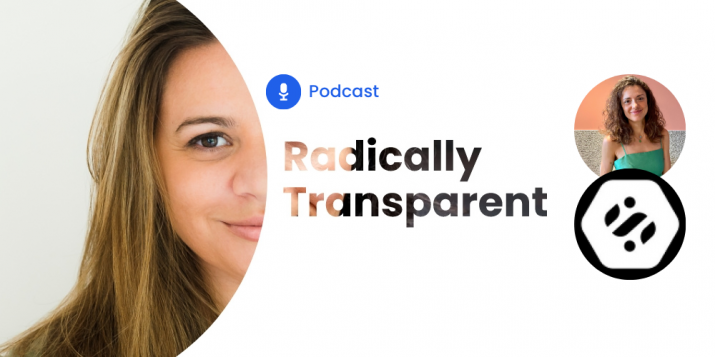
Creating your social media content calendar
Table of contents
As a B2B marketer, you’re publishing content. You’re using the social media channels available to you and make sense for your brand. But are your efforts organized?
Going about your social media marketing without a solid calendar—that is a plan for which social networks you’ll post to and when—means you’re taking a shot in the dark.
A social media content calendar is a precise blueprint telling you which social outlets to utilize, what kind of posts to make, and how to maximize the efficiency of your social campaigns. You’ll never have to worry about neglecting a social channel (and the audience that comes with it) for too long. And you’ll keep yourself and your marketing staff on track with a productive workflow.
A social media content calendar is essential for maximizing marketing ROI and revenues. This article will take you through some steps in constructing one for your organization.

1. Decide which social channels you’ll target and when
In building a social media content calendar, you first have to decide on the social networks you’ll engage in your outreach. Perhaps your prospects tend to congregate in Google+, or you find that more often than not, they share quick tips and links to interesting blog posts on Twitter. Whatever the case, you’ll need to determine where your audience is before you create a schedule of targeted content.
Here’s how you might determine the best social networks to target:
- Take stock of what’s worked for you already. If you’ve had some measurable success with a particular network in the past, chances are you’ll come across similar prospects by repeating your efforts in that channel.
- Pay attention to what your market segmentation is telling you. After segmenting your market, you know what your customers have a burning desire for, and what their business lives depend on day in and day out. If they need immediately actionable snippets of advice, Twitter might be a great platform. If the point person of prospective clients is a C-level executive, you might consider posting videos to YouTube and sharing them via LinkedIn, taking advantage of the fact that over 70% of B2B buyers view video product demos before making purchases (Forbes+Google).
As for the right times to post, refer to your social media management tool to see when your posts generally get the most engagement. Begin to map out a social posting schedule that matches those times to ensure you’ll have steady interactions. Also be sure to refer to some of the best practices for timing your social posts to ensure you’re taking advantage of peak reach hours.
2. Settle on a social content creation workflow
After choosing social outlets and determining optimal times for publishing posts, you should take stock of your social marketing workflow. If you have a precise order of operations for creating social content, you won’t run into any hiccups when it’s time to follow your calendar.
Here are two things to do to make sure your workflow will be solid:
- Make sure your content creators are up to the task. Whether you’re a one-person marketing machine, or you have a dedicated content creation agency or a team of writers, it’s important for content creators to fully know the purpose of each piece. Whether it’s as simple as sharing a picture on Facebook or posting company updates on LinkedIn, plan what your social posts will look like and how they’ll serve to build your brand’s story. Then, impart that knowledge to your content creators. An understanding of each piece’s purpose will give your social media writers the greatest amount of clarity and focus.
- Plan how your marketing collateral will be supported by your social outreach. One of the main purposes of being social, in marketing and in life, is to share things. Your inbound marketing collateral—be it in the form of corporate blog posts, whitepapers, customer testimonials, and/or recorded webinars and podcasts—is what you’ll share with your eager, targeted audience. Brainstorm what percentage of each type of marketing collateral will be shared via social, alongside native content that you’ll create in each network. Your buyer personas and an understanding of the idiosyncrasies of each social network will help you determine the right balance.

With an unobstructed vision of your social content creation workflow, you can start implementing your schedule with confidence and high expectations.
Recommended for further reading
3. Create and implement the calendar
You know what social networks to target and when. You know what your content workflow will look like. Now, it’s time to create a schedule for posting your content.
The schedule ideally should be a tool shared by everyone in the marketing department, so everyone, at all times, understands and can review their role. It should also come with some built-in flexibility and the ability to track engagements. There are a few ways you can ensure your calendar has those qualities.
- Put the calendar into a usable, shareable form. Use your social media management tool to have your entire schedule at a glance, in a form that anyone on your marketing team can understand and see.
- Build in time to engage with your audience. The right software can not only help you automate the process, but can help you uncover opportunities to respond to prospects and bring them into your fold. If a potential customer adds a question or comment to one of your social posts, build the time into your content calendar every day to engage the person with a helpful response.
A fully operational social media content calendar will ensure a steady stream of messages about your brand hitting the marketplace. After some time, you’ll be ready to review the results and optimize your strategy.
4. Optimize your calendar based on the results
From your calendar, you can begin to see after a period of time—months, weeks or even days—which channels garner the most engagement. Don’t be too quick to react, but keep promising outlets squarely in your sights. They might be keys to increasing leads and, ultimately, your conversions and bottom line.
For social channels that show steady growth, you might consider increasing the post frequency and engagement. You might eliminate underperforming channels from your overall strategy, but don’t completely give up on previously-vetted social networks. Try other kinds of posts, or perhaps publishing at different times of day to see if things change.
Finally, be sure to track all metrics. You might consider skipping the vanity metrics such as likes, shares, follows, and focusing on the more substantial measures such as conversion rate and number of engagements per channel. By using the right social analytics software, you’ll glean insights that will tell you what should change and what should stay the same.
The social media content calendar: an indispensable ROI optimization tool
Creating a social content calendar is an essential part of a winning social media marketing strategy. Use the tips above, and once you implement a schedule that works for your marketing campaign, you’ll reap the benefits of consistent social outreach.




